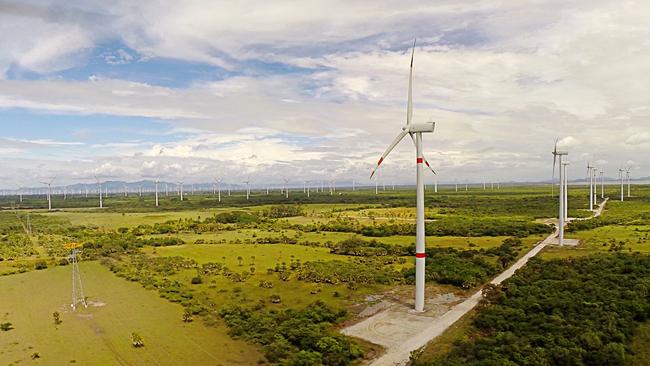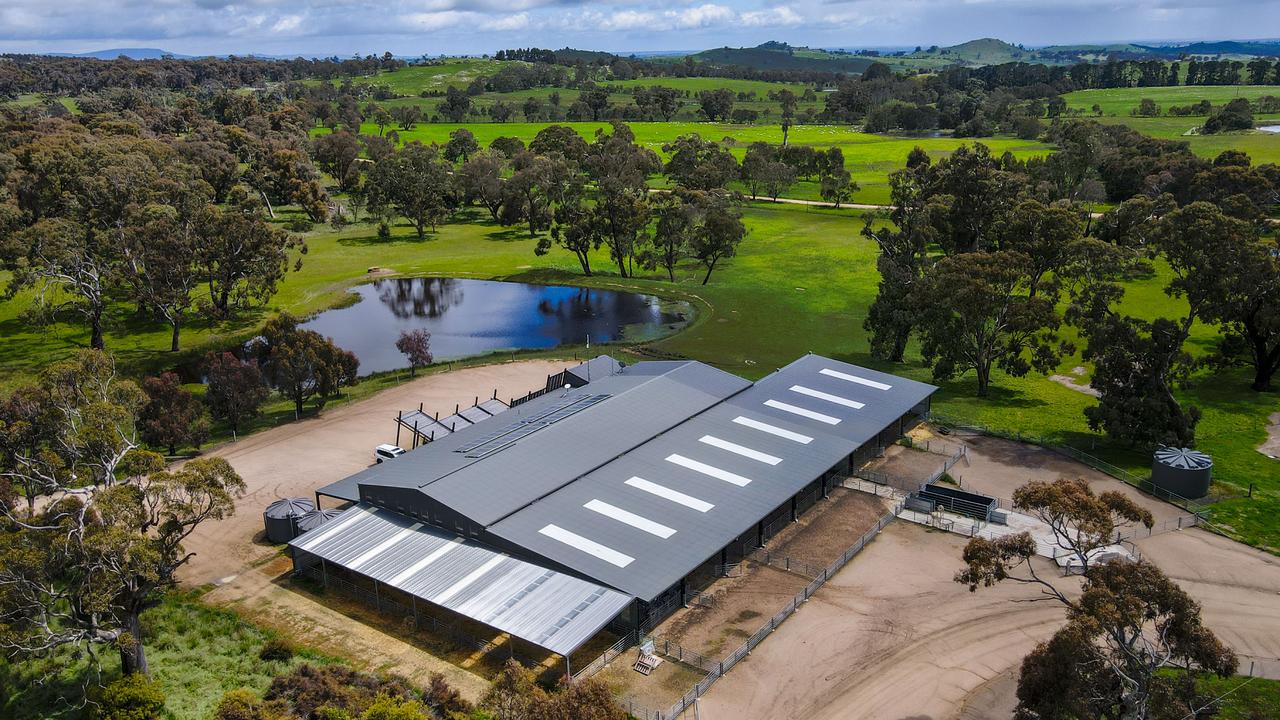Consumers pay: Albanese’s $200m subsidy for foreign-owned wind farms
Foreign-owned wind farm operators are earning up to $200m a year in subsidies in Victoria, which are mostly collected as hidden charges on household bills.

Victoria
Don't miss out on the headlines from Victoria. Followed categories will be added to My News.
Chinese, French and Spanish wind-farm operators are earning up to $200m a year in renewable energy subsidies in Victoria, which are mostly collected as hidden charges on households’ and business’ electricity bills.
China’s State Power Investment Corporation, which owns Pacific Blue’s nine Victorian wind farms, receives an estimated annual subsidy of about $50m, based on its turbines operating at just a third of their 361 megawatt combined capacity, plus other subsidies on its NSW and South Australian operations.
Spanish multinational Acciona’s Mortlake South, Mt Gellibrand and Waubra wind farms received about $64m in large-scale generation certificate subsidies.
The 69-turbine Berrybank wind farm, owned by Spanish GPG Naturgy group generates about $40m in LGCs, while French-owned Neoen’s Bulgana wind farm generates another $28m in subsidies.
Prime Minister Anthony Albanese has promised to cut Australians power bills by pumping billions of dollars into renewable energy subsidies.
But electricity prices continue to soar, as rural communities rally against the renewables rush that is carving up their land with 140m wind towers and 500kV transmission lines.
Traynors Lagoon farmer Jason Barratt asked: “How on earth are our energy prices going to be lower by handing bucketloads of money to foreign-owned companies? It doesn’t make sense.”
Fellow Wimmera farmer and accountant Peter Knights said “we need direct line of sight on the subsidies they’re getting and the tax they’re paying – at the state, local and federal level”, given their impact on rural communities.
Under the LGC subsidy scheme, the federal government forces electricity retailers to collect enough money from their customers to buy a target number of LGCs from wind, solar and other renewable energy generators each year. The subsidies are paid on top of the revenue each company earns on selling their power on the wholesale market.
It means in Victoria alone both local and foreign wind farm operators generate close to $620m in LGCs that subsidise their businesses, while across Australia they share in $1.6bn worth of certificates with other wind, solar, hydro and biomass generators.
The Clean Energy Council, which represents wind and solar farm developers, has previously stated energy from wind or solar is the lowest cost form of new generation, and these costs continue to decrease year-on-year.
The CEC also says LGC subsidies “ensure the benefits of cheaper renewable energy are available to consumers”.
But just last week the Australian Energy Regulator’s quarter two (April to June 2024) performance report found wholesale electricity prices had soared since the beginning of the year “due to a combination of higher demand, network and generator outages, and lower wind and solar output increasing the share of electricity generated by higher-priced gas and hydro”.
In Victoria the wholesale price jumped from $70 per megawatt hour in the first three months of the year to $138/MWh – a 99 per cent increase.
“Compared with Q1 2024 (Jan-March), Queensland’s price fell $29 per MWh (21 per cent) while all other regions recorded significant increases – NSW $87 per MWh (up 86 per cent), Victoria $69 per MWh (up 99 per cent), South Australia $65 per MWh (up 78 per cent) and Tasmania $67 per MWh (up 97 per cent),” the AER reported.
CEC policy director Christiaan Zuur said the price hike was “largely attributable to an increased reliance on costly gas during winter months”.
“What is clear from this analysis is there is a strong need for more grid-scale batteries and long-duration energy storage technologies to moderate these price impacts. The other solution is to accelerate the build out of bulk renewable generation.
“Industry is rising to the challenge. Last year saw record investment in grid scale storage.”
He said it was “encouraging to see a boost to the number of projects undergoing grid connection, with 43 gigawatt of new capacity progressing from application to commissioning, up 50 per cent from the same time last year.
“Addressing the challenges affecting timely grid connection will be the key to growing the share of renewables in the grid throughout the decade and beyond,” Mr Zuur said.
“This is why the Clean Energy Council continues to work with industry, AEMO and networks to improve the connection process through the Connection Reform Initiative.”
More Coverage
Originally published as Consumers pay: Albanese’s $200m subsidy for foreign-owned wind farms




